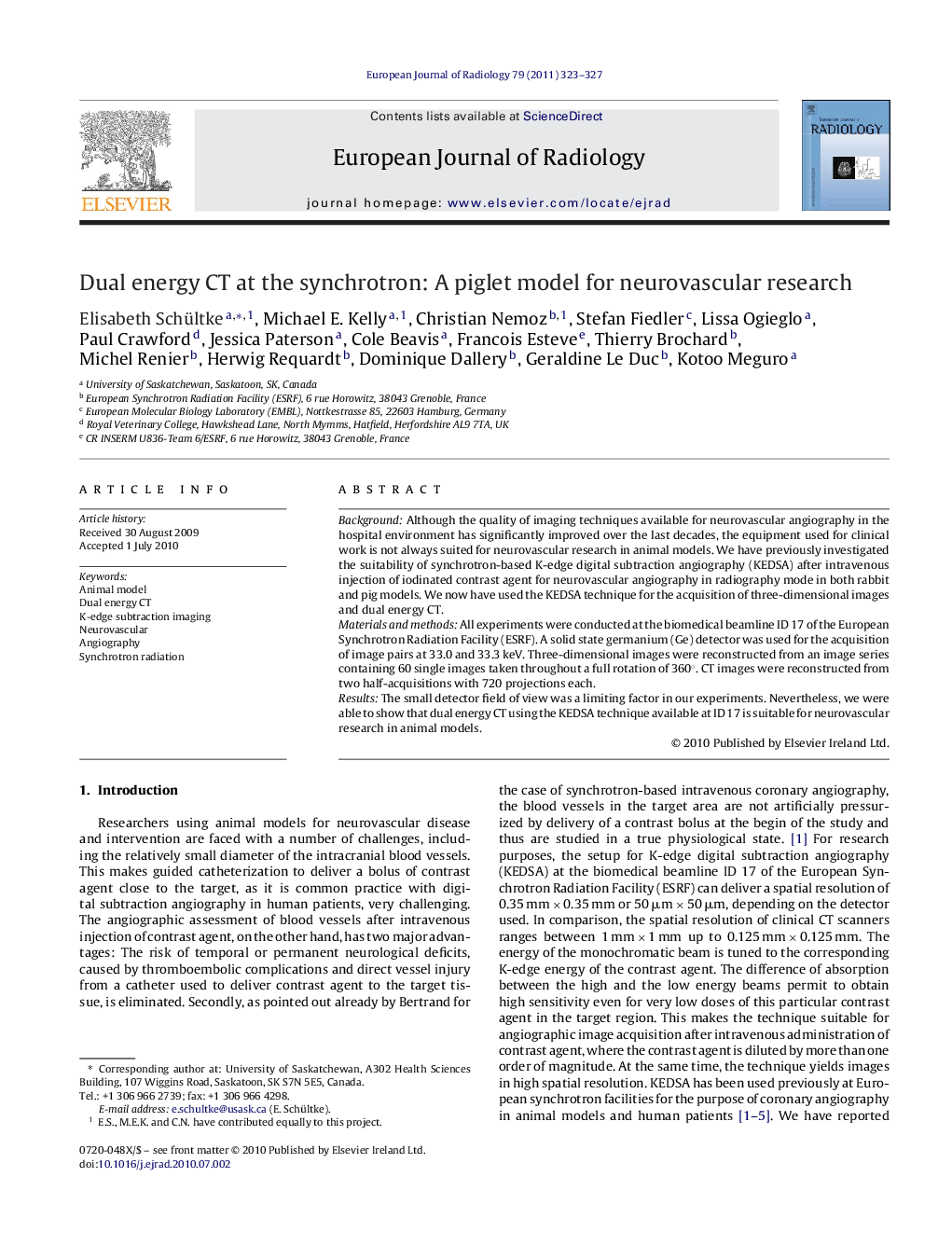| Article ID | Journal | Published Year | Pages | File Type |
|---|---|---|---|---|
| 4226691 | European Journal of Radiology | 2011 | 5 Pages |
BackgroundAlthough the quality of imaging techniques available for neurovascular angiography in the hospital environment has significantly improved over the last decades, the equipment used for clinical work is not always suited for neurovascular research in animal models. We have previously investigated the suitability of synchrotron-based K-edge digital subtraction angiography (KEDSA) after intravenous injection of iodinated contrast agent for neurovascular angiography in radiography mode in both rabbit and pig models. We now have used the KEDSA technique for the acquisition of three-dimensional images and dual energy CT.Materials and methodsAll experiments were conducted at the biomedical beamline ID 17 of the European Synchrotron Radiation Facility (ESRF). A solid state germanium (Ge) detector was used for the acquisition of image pairs at 33.0 and 33.3 keV. Three-dimensional images were reconstructed from an image series containing 60 single images taken throughout a full rotation of 360°. CT images were reconstructed from two half-acquisitions with 720 projections each.ResultsThe small detector field of view was a limiting factor in our experiments. Nevertheless, we were able to show that dual energy CT using the KEDSA technique available at ID 17 is suitable for neurovascular research in animal models.
